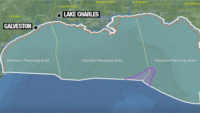The U.S. and Mexican governments on Feb. 20 agreed to jointly develop, along the countries’ maritime border in the Gulf of Mexico, oil and gas reservoirs that could contain up to 172 million barrels of oil and 304 billion cu ft of natural gas, according to the Bureau of Ocean Energy Management, or BOEM.
If approved by the U.S. and Mexican senates, the agreement could open up 1.5 million acres of maritime boundary waters to joint exploration by U.S. companies and the Mexico-owned oil company Pemex. If a U.S. company and Pemex cannot agree on a plan to develop and share the resources, the agreement allows for a process in which the companyXXXXXXXXX or Pemex can explore the area on its own.
The agreement also provides for joint inspection teams from the U.S. Bureau of Safety and Environmental Enforcement and the Mexican government to ensure compliance with each country’s laws and regulations. Agencies in both countries will review all plans for the development of the fields, and additional requirements may be put in place before development activities can proceed.
Within three statute miles of the maritime boundary with Mexico, some of the area under the agreement will be up for lease at a June 20 BOEM lease sale. Bids for those tracts will be sealed until the agreement is finalized, according to BOEM spokeswoman Theresa Eisenman.
"The administration's announcement with Mexico is a positive step that demonstrates the value of opening new areas to responsible and safe domestic offshore development," the American Petroleum Institute said in an e-mailed statement. "This also shows the need for U.S. energy policy that emphasizes more domestic development—such as areas offshore Virginia, North Carolina and South Carolina—to maximize U.S. jobs and investment to energy development here at home."
Generally, however, oil and gas companies had little reaction to the announcement, perhaps because, if the BOEM estimate is correct, the oil would equate to just nine days of oil consumed in the U.S. The deepwater technology necessary to drill in the area might prove cost-prohibitive for those reservoirs to be explored. However, existing platforms near the area, such as Shell’s Perdido hub, might be able to take advantage of the agreement, says Nicolette Nye, a spokeswoman for the National Ocean Industries Association.



Post a comment to this article
Report Abusive Comment